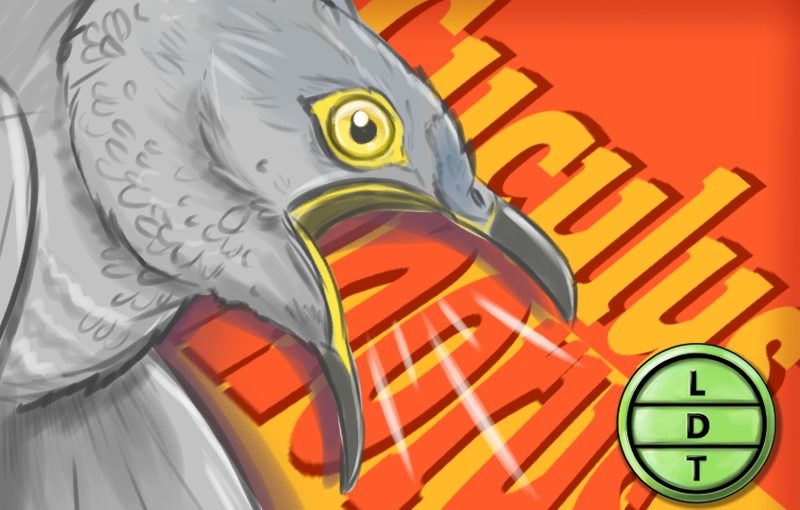“Today we’re talking about a crummy parent and a nasty little child. But more on that later.”
Like the social programs that Ayn Rand despises so much, parasites exist to profit off of someone else with no benefit to the host. The cuckoo bird likes making kids, but hates raising them. They’re a lot of work, and they’d rather fly around and squawk at things rather than be parents. So they take the sleazy parasite route. But how can they get anyone else to feed and spank their kids? It’s all about being the biggest bird in the bush here in Life, Death, and Taxonomy.
Description
- They have slender bodies, with grey to brown feathers.
- Their underbellies are lighter with dark stripes or speckles.
- Their wings are broad and triangle shaped.
- The have round heads with short narrow beaks
- Their tails are long and squarded at the bottom.
- You can find common cuckoos all over Europe, Asian, and the UK.
- They spend their winters in Africa.
Measure Up
Wingspan – 55–60 centimetres (22–24 in) – 24 inches – How many cuckoo wingspans go into the height of the largest cuckoo clock (24 ft)? Hint: The clock is in Sugarcreek, Ohio which is called the Little Switzerland of Ohio. It was built in 1972 and every 30 minutes, three foot tall figurines come out and dance the polka. Answer: 12 cuckoos
Length – 32–34 centimetres (13 in) – How many of the smallest cuckoo clock (5.2 inches) goes into the length of a cuckoo. Hint: Hurbert Herr Cuckoo clocks claim to produce the smallest ones in the world. The clocks are hand carved and made in Triberg, Germany. Answer: 2.5 clocks.
Fast Facts
- The bird can live up to six years.
- Their striped bellies allow them to mimic sparrowhawks with similar bellies.
- A study found that other smaller birds were less likely to approach stuffed birds with barred underbellies.
- But smaller reed warblers were aggressive with stuffed birds that looked less like hawks.
- Other small birds avoided them altogether.
- Males are the ones that make the signature “cuckoo” sound that we all know and love.
- Males make the sound as a mating call.
- It starts as a minor third in the beginning of mating season and becomes a minor third and then a fourth as the season continues.
- Out of mating season, they don’t make the cuckoo sound and can be heard singing a variety of other songs.
- It always sing in the key of C.
- Females make a bubbling sound.
- Cuckoos eat insects.
- They love hairy caterpillars that other birds don’t like.
- They will also occasionally eat other birds’ eggs.

